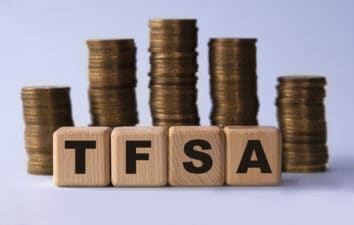On August 26, Tim Hortons Inc (TSX: THI)(NYSE: THI) and Burger King Worldwide (NYSE: BKW) announced an agreement to form a new global quick service restaurant company with over 18,000 restaurants in 100 countries.
At the time of the agreement, 3G Capital owned 243,858,915 shares of Burger King, for a controlling stake of 69%. 3G Capital leveraged its controlling position in Burger King to combine with a bigger Tim Hortons while managing to maintain control of the newly merged company. This is deal-making at its finest.
The price of control
If investors were curious as to why a significant premium was paid to Tim Hortons shareholders, it was most likely a reflection on the 51% control that was attained by 3G Capital.
Looking back at the last couple of years’ results, Tim Hortons generated more net income and cash compared to Burger King. Between 2012 and 2013, Tim Hortons generated about $420 million in net income annually. Compare this to about $175 million in net income that Burger King generated over the same time frame. Similarly, Tim Hortons generated $580 million in cash from operations per annum while Burger King managed $275 million in cash from operations during that same time period.
Given Tim Hortons’ superior position, I was surprised that 3G Capital was able to negotiate control. It will be interesting to see how much of a premium Tim Hortons placed on this during negotiations.
Structuring the deal
Existing Tim Horton shareholders have three options relating to their shares: a cash buyout at $88.50, an all shares exchange at a ratio of 1 Tim Hortons share for 3.0879 shares of the new holding company, or a mixed exchange of $66.50 in cash and 0.8025 in newly issued shares for each Tim Hortons share.
Given the complexity of the deal, investors may be interested in knowing how 3G Capital ensured it had control of the entire merged company. It came down to one clause in the final agreement where “in no event shall the fair market value of [3G Capital’s] interest in the [combined company] be less than 50.1% of the fair market value of all equity interests…”
Financing the deal
At the time of the deal, Tim Hortons had 132,619,671 common shares outstanding. Assuming all investors take the cash buyout at $88.50 per share, then existing shareholders would be bought out for $11.74 billion.
Not coincidentally, 3G Capital was able get enough financing from JPMorgan Chase & Co. and Wells Fargo & Co in the form of a $6.75 billion term loan, a revolving credit facility of $500 million (similar to a line of credit), and a $2.25 billion secured second lien bridge facility (like a second mortgage).
If investors were to add these amounts, they would total $9.5 billion, still short of the approximately $12 billion needed.
Where did 3G Capital get it?
3G was able to get Warren Buffett himself to agree to invest $3 billion in the form of cumulative compounding perpetual preferred shares. This investment also bears a 9% interest and a warrant option (the right) to convert to common shares.
The convert option will represent 1.75% of the fully diluted common shares of the combined company.
While this may not be as lucrative as Buffett’s $5 billion preferred share investment in Goldman Sachs Group Inc that paid a 10% dividend and also had a warrant option attached, given the run-up in the markets and the U.S. Treasury’s 10-year yield at 2.4%, a 9% guaranteed return is simply a good investment.
So then, between the $9.5 billion of debt and $3 billion investment from Buffett, 3G Capital had the financing it needed to close the deal.
Follow the cash
Tim Hortons’ 2013 effective interest rate was 5.4%, a decrease of 40 basis points from 2012. Comparatively, the weighted average interest of Burger King in 2013 was 6.6%, a decrease of 70 basis points from 2012.
As of June 30, 2014, Tim Hortons had about $1.3 billion in long-term debt while Burger King had about $2.8 billion in long-term debt. Multiplied by their respective interest rates, investors should calculate approximately $255 million in yearly interest expenses.
To be conservative, let’s assume that the $9.5 billion of debt is calculated at the higher Burger King’s interest rate of 6.6%, which would total $627 million in yearly interest expenses. This is coupled with Buffett 9% perpetual preferred dividends, which are worth $270 million every year.
The total estimated interest and dividend expenses would be about $1.15 billion ($255 million + $627 million + $270 million).
Tim Hortons’ existing operations could easily generate $760 million in cash (about $600 million from operations + $160 million in dividends saved). At the same time, Burger King could generate $495 million in cash (about $350 million from operations + $85 million in dividends saved + $60 million in not retiring debt).
Combined, they can generate $1.2 billion to $1.3 billion easily to cover off the necessary interest and dividend expenses. Factoring in expansion plans, revenue, and cost synergy, as well as a consistent repeatable business model, the combined company now has the cash flow it needs to sustain itself.
Ultimately, 3G Capital’s acquisition of Tim Hortons is based on its strong dominant position in Canada, its non-cyclical business model, and its ability to generate cash.








